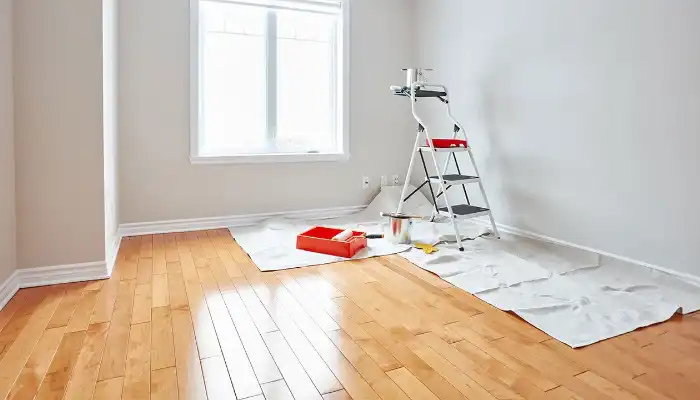A home renovation project can be an exciting endeavor, a chance to transform your living space into a dream home. However, without proper planning and execution, the dream can quickly turn into a stressful nightmare.
To navigate the renovation journey smoothly, it’s crucial to be aware of the common pitfalls that can derail your project. This guide will equip you with the knowledge to avoid these mistakes, ensuring a successful and rewarding renovation experience.

The Perils of Lackluster Planning
Thorough planning is the bedrock of any successful renovation. Here’s why:
- Defining Your Vision: Clearly define your goals for the renovation. Do you crave a modern kitchen remodel, a spa-like bathroom retreat, or an expanded living area? Having a clear vision helps guide all subsequent decisions.
- Budgeting for Reality: Create a realistic budget that accounts for all anticipated expenses. Factor in labor costs, material prices, permits, and potential unforeseen circumstances.
- Charting the Course: Establish a timeline for your project. This helps keep everyone involved on track and avoids delays that can escalate costs.
The Cost Conundrum: Avoiding Underestimation
Underestimating renovation costs is a recipe for financial headaches. Here’s what can contribute to underestimation and how to avoid it:
- Hidden Costs: Beware of hidden costs like demolition fees, waste disposal, and unexpected repairs discovered during the project.
- Accurate Estimates: Get quotes from multiple reputable contractors. Break down the cost estimates by line item to understand exactly where your money is going.
- Contingency Cushion: Build in a contingency fund of 10-15% of your total budget to cover unforeseen expenses.
The Power of Professional Guidance: Don’t Go It Alone
The expertise of professionals can make a world of difference in your renovation journey. Here’s why seeking professional help is crucial:
- Valuable Expertise: Architects, designers, and contractors possess specialized knowledge and experience. They can help translate your vision into a functional and aesthetically pleasing design.
- Matching Skills to Needs: Identify the right professionals for your project. An architect excels at space planning and structural concerns, while an interior designer specializes in creating a cohesive and stylish aesthetic.
Material Matters: Don’t Skimp on Quality
The materials you choose have a significant impact on the durability and aesthetics of your renovation. Here’s why quality matters:
- Long-Term Investment: High-quality materials may cost more upfront, but they offer greater longevity and require less frequent replacement.
- Research is Key: Research different materials and their properties. Consider factors like durability, maintenance requirements, and environmental impact.
- Balancing Cost and Value: Find a balance between cost and quality. Focus on investing in high-quality materials for key areas like flooring, countertops, and plumbing fixtures.
Navigating the Maze of Permits and Regulations
Building codes and regulations exist to ensure safety and structural integrity. Here’s why adhering to them is essential:
- Understanding the Rules: Familiarize yourself with the local building codes and regulations that apply to your renovation project.
- Securing Permits: Obtain all necessary permits before commencing construction. Skipping this step can result in fines and delays.
- Consequences of Cutting Corners: Ignoring regulations can lead to structural issues, safety hazards, and even the inability to sell your home in the future.
Don’t Ignore Structural Issues: Unearthing Hidden Problems
Addressing structural concerns head-on is vital for the safety and longevity of your home. Here’s why a thorough inspection is crucial:
- Addressing the Foundation: Structural issues like foundation cracks or uneven floors need immediate attention.
- Inspection Advantage: Schedule a comprehensive inspection by a qualified professional to identify any existing or potential structural problems.
- Seeking Expert Advice: If structural issues are identified, consult with a structural engineer to determine the best course of action for repair or reinforcement.
Avoiding a Design Disconnect: Balancing Style and Resale Value
While injecting your personality into your renovation is key, striking a balance between personal style and resale value is crucial. Here’s how:
- Classic Touches with a Modern Twist: Opt for timeless design elements like clean lines, neutral color palettes, and high-quality materials. You can then personalize the space with pops of color, statement furniture pieces, or unique artwork.
- Considering Future Buyers: While prioritizing your own needs, be mindful of potential buyer preferences. Consider avoiding overly specific design choices like bold paint colors or unconventional layouts that might not appeal to a wider audience.
- Future-Proofing with Flexibility: Design with adaptability in mind. Choose fixtures and finishes that can be easily updated in the future, allowing future homeowners to personalize the space to their taste.
Going Green for Savings and Sustainability
Renovations present a prime opportunity to incorporate energy-efficient features that benefit both your wallet and the environment. Here’s why:
- Long-Term Cost Savings: Investing in energy-efficient upgrades like Energy Star-rated appliances, LED lighting, and improved insulation might have a higher upfront cost, but they translate to significant savings on utility bills over time.
- Sustainable Materials: Opt for eco-friendly materials like recycled content flooring or sustainably sourced wood. These choices not only contribute to a healthier planet but can also enhance the overall value of your home.
- Tax Incentives and Rebates: Many governments and utility companies offer tax breaks and rebates for incorporating energy-efficient features during renovations. Research available programs to maximize your financial benefits.
Table 1: Energy-Efficient Upgrades for Your Renovation
| Upgrade | Benefit |
| Energy Star-rated appliances | Reduce energy consumption and utility bills |
| LED lighting | Lasts longer and uses less energy than traditional bulbs |
| Improved insulation | Maintains consistent temperature, reducing reliance on heating and cooling systems |
| Water-saving fixtures | Reduce water usage and related costs |
| Smart thermostats | Program heating and cooling for optimal efficiency |
The Importance of Patience in Renovations
Rushing a renovation is a recipe for disaster. Unexpected issues can arise, and allowing ample time for each phase is crucial:
- Demolition Delays: Unforeseen problems like hidden plumbing or electrical issues can occur during demolition. Factor in buffer time for such situations to avoid derailing your project timeline.
- Planning Pays Off: Thorough planning is paramount. Allocate sufficient time for obtaining permits, finalizing design details, and securing reliable contractors. A well-defined plan minimizes stress and ensures a smooth renovation process.
- Embrace Flexibility: Be prepared for minor hiccups and adjust your expectations accordingly. Maintain open communication with your contractor and remain flexible to navigate any unforeseen challenges.
Effective Communication with Contractors
Clear communication is the cornerstone of a successful renovation. Here’s how to ensure you’re on the same page with your contractor:
- Setting Expectations: Clearly communicate your vision, budget, and timeline expectations to your contractor upfront. Discuss any specific concerns or needs you have and ensure they are documented in the contract.
- Regular Check-Ins: Maintain open communication throughout the project. Schedule regular meetings with your contractor to discuss progress, address any concerns, and ensure the project aligns with your vision.
- Addressing Issues Promptly: Don’t hesitate to voice concerns if something doesn’t meet your expectations. The sooner you address issues, the easier they are to resolve and the less likely they are to snowball into major problems.
Conclusion
By recognizing these common pitfalls and prioritizing careful planning and execution, you can avoid renovation roadblocks and achieve a successful outcome. Remember, even the most experienced DIYers can encounter challenges.
Don’t be afraid to seek professional guidance from architects, designers, or experienced contractors to navigate any complexities. Learn from potential mistakes, embrace a patient approach, and embark on your renovation journey with confidence!


